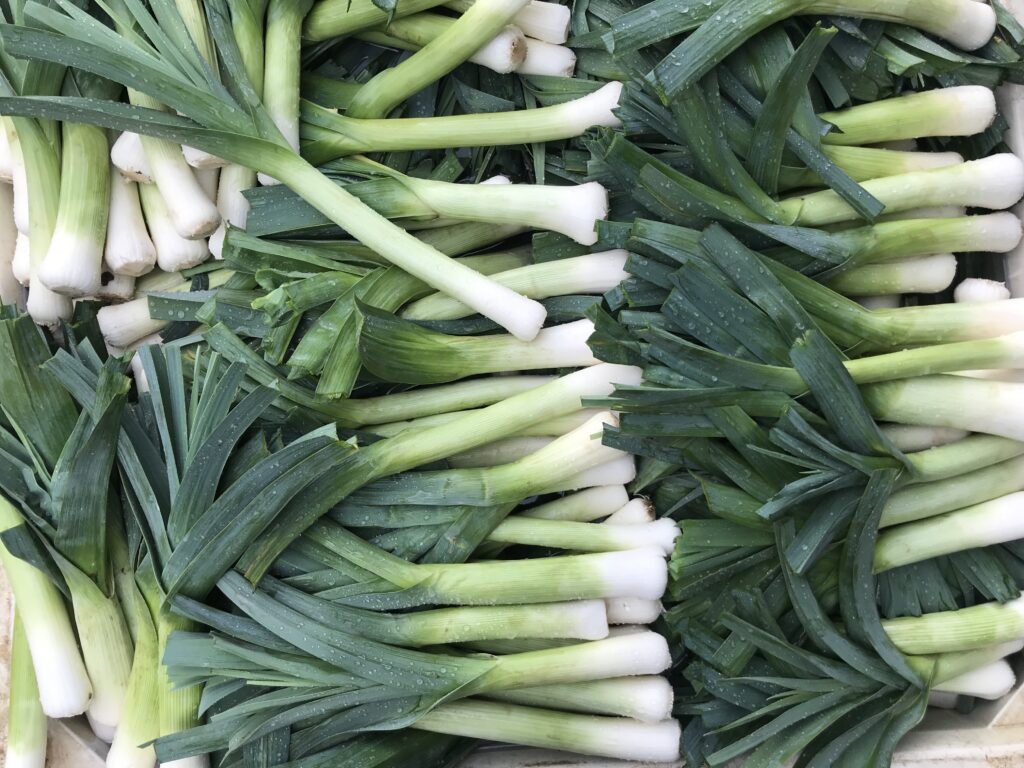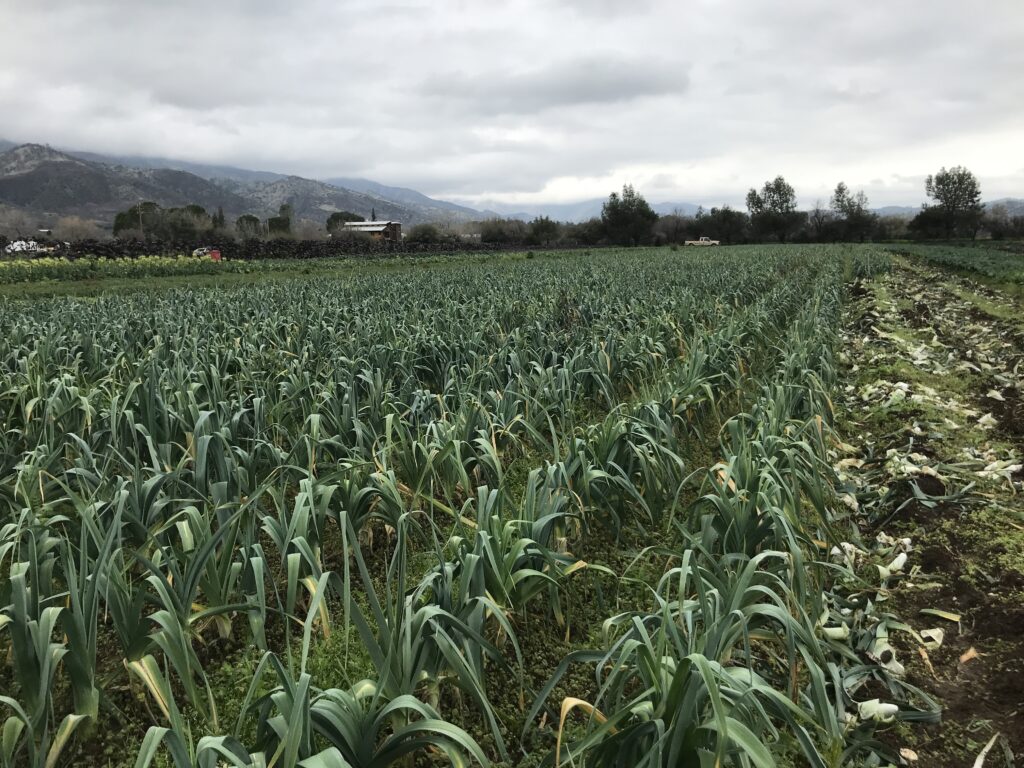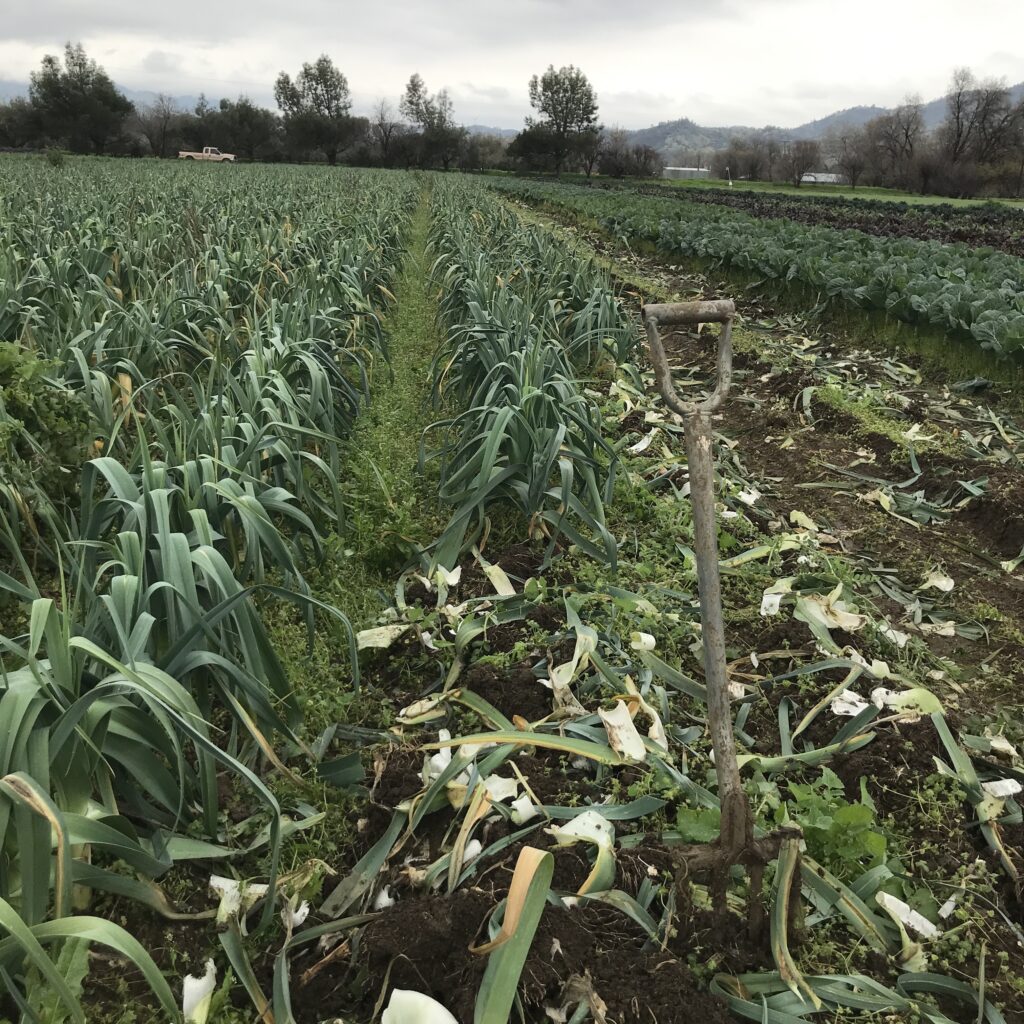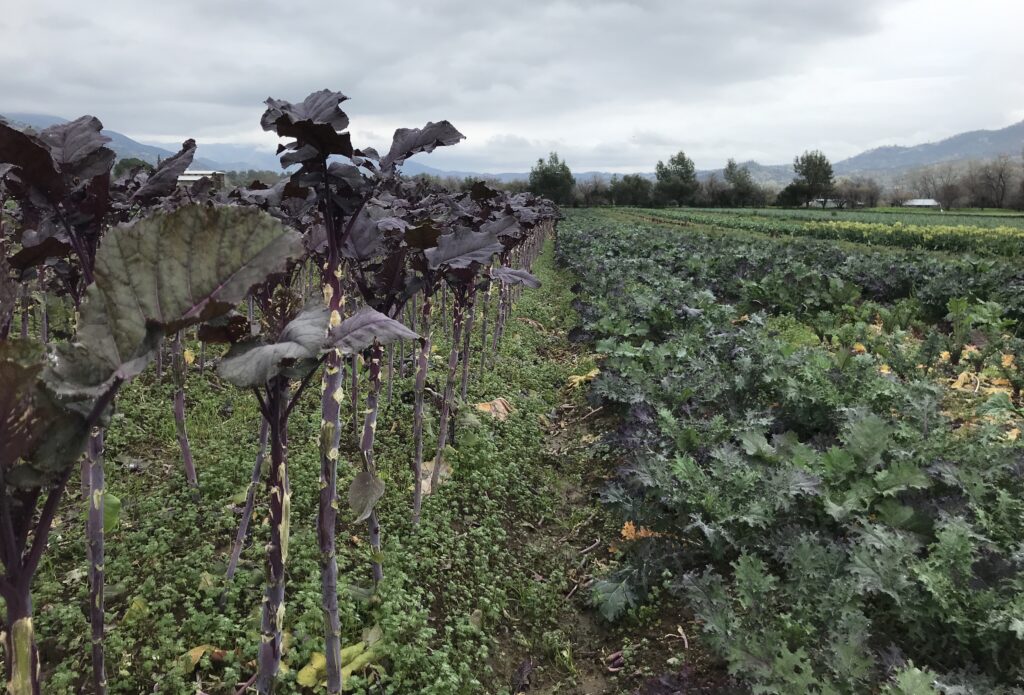
Alliums (onions, garlic, leeks, shallots, scallions, and chives) are staples in most cuisines and are found in home kitchens around the world, making it easy to take them for granted. Like all produce though, they too have different varieties, seasons, nuances, and quirks. They have interesting backstories and are grown with love and care on farms, just like peaches, tomatoes, asparagus, kale and other flashier produce. This week, let’s show some love for leeks, the alliums that are in our CSA boxes this week, and are a staple of our winter boxes.
Why grow leeks? First, they taste great and go well with other winter produce (potatoes, winter squash, all the greens, etc.). From a growing perspective, leeks are a hearty, dependable crop. They can grow all winter long, withstanding temperature swings and freezes. Plus, unlike other alliums like garlic and onions, they don’t need to be picked all at once.

We grow two varieties: King Richard and Tadorna, two open pollinated varieties.
– King Richard are an old, unique variety. They are faster-growing and are almost all shank, the light colored part that is most commonly used in cooking. Several years ago, this variety almost disappeared but several passionate farmers, including from Full Belly, pressured seed companies to keep it around. Overall, the seed industry has moved to hybrid leek seed.
– Tadorna are shorter and squatter, and usually wider, with beautiful blue/green leaves. Compared to King Richard, they’re “prettier” and more cold tolerant, but they grow slower and have shorter shanks.
These two leek types taste very similar, so why grow both? We have customers that prefer one type over another and the difference in maturity time can be helpful. This week you’re almost certainly getting King Richard leeks. I wasn’t able to get a side by side comparison photo, but this picture shows the difference.
Leeks are a long-season crop taking at least 75-100 days, depending on the variety, from transplanting to harvest. In comparison, kale needs about 50 days and spinach takes 25. We used to plant all of our leeks between mid-May and early June, carefully tending them during the hot summer and would start harvesting in early October, going until March. Growing a cool season crop during the summer is not ideal for the plants or for us, the plants get heat stress, barely growing until it cools down in September, and we get stressed trying to keep them from drying out. In the past few years, we’ve added a later planting in late August/early September, and those leeks are reaching maturity now. This later planting has worked out well for us and we plan to do more of that going forward. The trick, like all fall planting, is to transplant before it gets too cold and dark so that the plants will size up in time, and to harvest them before they bolt (when a plant forms flowers and goes to seed) in spring.

And when it comes time to harvest – if the ground is wet like it is now, we use a trusty digging fork, which is slow going. With drier conditions, we use an undercutter on the tractor which runs a blade below the soil surface and roots, loosening the soil and making the leeks easy to pull up.

Also in the boxes this week: red Russian kale. I snapped a picture of the squat Red Russian kale next to the towering Karinata kale. Why the height disparity? Karinata kale is a kale/mustard hybrid. Mustards are prone to bolting and this particular variety was bred to be an insectary crop that quickly formed flowers, even during winter, to provide a food source for beneficial insects when other food sources are scarce. When the weather heats up, the red Russian kale will get taller and form flowers, but not nearly as tall as the Karinata.
Happy eating!
– Elaine Swiedler, CSA Manager
